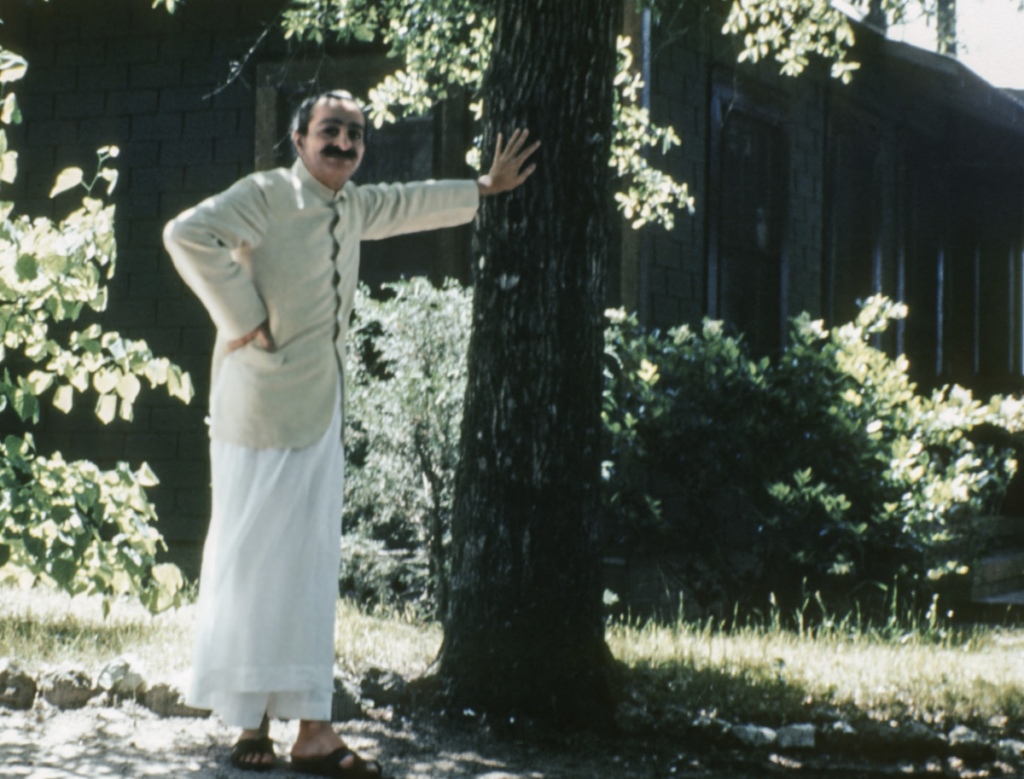
April 29, 2022
Life at the Center
After seven years of immense and loving effort, Elizabeth Patterson wrote Baba in the fall of 1951 that His Center in Myrtle Beach was ready, that all His conditions for visiting the West had been met, and that she hoped He would come soon. He cabled back, “Absolutely happy EliNorina [Baba’s nickname for Elizabeth Patterson and Norina Matchabelli] successful having Baba definitely come to America about end of March God willing. Deepest love, Baba.”[i] Two weeks later, on October 16, He began what He called His Manonash work.
This work, like the rest of New Life, will probably always remain enigmatic. Even the close Mandali who were there would later tell pilgrims that though they were face-to-face with Baba’s work at the time—models of buildings representing five world religions, deep seclusion on Seclusion Hill or in a newly-built cabin in lower Meherazad—its meaning eluded them. After He emerged, He shed a little light on the deep importance of the work: “This is Manonash, the annihilation of the false, limited, miserable, ignorant, destructible I to be replaced by the ‘Real I,’ the Eternal Possessor of Infinite Knowledge, Love, Power, Peace, Bliss and Glory in its unchangeable existence.”[ii]
Baba went on to describe His inner state after the Manonash work, touching especially on some of its abiding contradictions: “This satisfaction is due to the feeling I have of having regained my Old Life Meher Baba state, yet retaining my New Life ordinary state. I have regained the Knowledge, Strength and Greatness that I had in the Old Life; and retained the ignorance, weaknesses and humility of the New Life. This union of the Old and New Life states has given birth to LIFE—Life that is eternally old and new.”[iii]
From the very beginning of this Life, Baba talked daily with Dr. Donkin, planning His trip to the West. He had explicitly connected the trip to the manifestation of His Manonash work in a letter to Elizabeth before Manonash began: “In order that the results of my work from Oct. 16, 1951, to Feb. 16, 1952 may be fully manifested in the Western world—either with the fullest success or as an utter failure—I must be in seclusion for the first two weeks of my stay in America … After these first two weeks of seclusion I shall see everyone everywhere because, eventually, I shall have to give to the world the results of my four months’ work.”[iv]
On March 21, 1952, a month before Baba arrived on the Center, He began what He called the “Complicated Free Life,” a stage of the Life that was to last throughout His time there. During the Complicated Free Life, He said, binding would dominate freedom.
Perhaps this binding can be seen in Baba’s physical suffering and helplessness as the trip approached: He endured piles surgery, fever and infection from a smallpox vaccine, and an intense restlessness noted by the women Mandali. Certainly, it can be seen in the bloodied helplessness of the automobile accident that would occur on May 24, four days after Baba left the Center. Nevertheless, by the time Baba’s plane hit the ground in New York and they saw Elizabeth “waving frantically”[v] to them, His mood also had some light, some buoyancy. And so, at long long last, Baba brought Life, His Life, onto the Center.
As indicated in His letter, Baba spent His first two weeks in seclusion. Then He opened the floodgates. Darwin Shaw describes his experience of that time: “Along with his presence, Baba brought Divine Love, which not only spread out, enveloping the Center, but extended out into the surrounding countryside—how far, we do not know. But especially at the Center, Baba’s Divine Love transformed the atmosphere in its Sweetness and Beauty. It was truly magical.”[vi]
The love kept pouring: dear old lovers traveling to see their Beloved again, new ones not sure what to expect, flooded with inexplicable tears at His presence. In the talk that Larry Karrasch gave at the Center during the 70th Anniversary Celebration this month, he described seeing God as a shy four-year-old child: the homecoming not to a stranger but to the Divine Beloved. At the “open house” on May 17, 110 people were expected, but they just kept coming until the number swelled to over 300, basking in the sudden unimaginable presence of God.
Baba said that in the Complicated Free Life, “Bindings would dominate freedom.” But during those sunlit days at the Center, there are hints of something more, something that hearkens to the culmination of the Manonash work and the Fiery Free Life that Baba promised was to come, in which “both strength and weakness, freedom and bindings would be consumed in the fire of divine love.”[vii] In that first trip to the Center, in the eyes of the little children seeing God and the adults who felt the “relief and joy”[viii] of finally coming Home—maybe some of that all-consuming divine love was already seeping in amid the binding and the suffering, blending into the holy paradoxes of Baba’s Life.
[i] Lord Meher, Online Edition, by Bhau Kalchuri, p. 3007[ii] Lord Meher, Online Edition, by Bhau Kalchuri, 3029
[iii] Lord Meher, Online Edition, by Bhau Kalchuri, 3030
[iv] As Only God Can Love, by Darwin Shaw, p. 88
[v] The Joyous Path, by Heather Nadel, p. 542
[vi] As Only God Can Love, by Darwin Shaw, p. 89
[vii] Lord Meher, Online Edition, by Bhau Kalchuri, p. 3100
[viii] Lord Meher, Online Edition, by Bhau Kalchuri, p. 3085